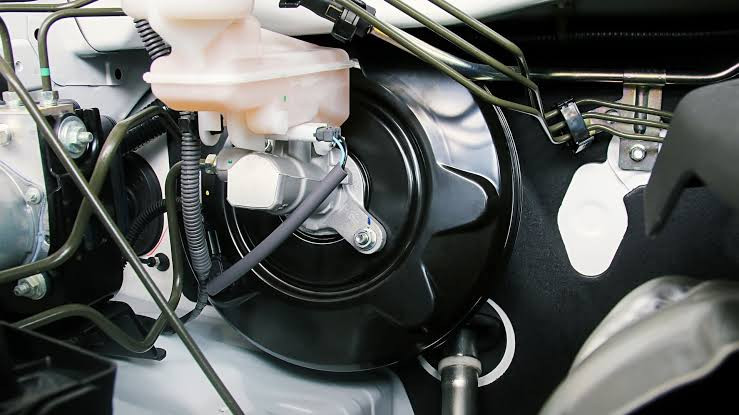Do you know what a brake booster and a master cylinder are? They are important parts of your car’s braking system. They help you stop your car when you press the brake pedal. But sometimes, they can go bad and cause problems. How do you know if your brake booster or master cylinder is bad? How do you test them?
In this article, we will explain how to check these parts and what to do if they need to be replaced.
What is a Brake Booster?
A brake booster is a device that uses vacuum from the engine to make the brake pedal easier to press. It is located behind the brake pedal and connected to the master cylinder by a rod. When you press the brake pedal, the brake booster increases the force that goes to the master cylinder. This makes the brakes more effective and reduces the effort you need to stop your car.
What is a Master Cylinder?
A master cylinder is a device that converts the force from the brake pedal into hydraulic pressure. It is located on the firewall of the engine compartment and connected to the brake lines that go to the wheels. When you press the brake pedal, the master cylinder pushes brake fluid through the brake lines to the brake calipers or wheel cylinders. These devices squeeze the brake pads or shoes against the brake rotors or drums. This creates friction that slows down your car.
How to Check for a Bad Brake Booster
To check for a bad brake booster, you need to do a simple test. Here are the steps:
- Turn off your car and pump the brake pedal a few times. This will release the vacuum from the brake booster.
- Hold the brake pedal down firmly and start your car. The brake pedal should sink about an inch. This means the brake booster is working properly. If the brake pedal does not sink, the brake booster may be bad or the vacuum hose may be damaged or disconnected.
- Listen for a hissing noise inside the car when you press the brake pedal. This may indicate a leak in the brake booster. The noise may change slightly when you apply the brakes.
If you notice any of these signs, you should have your brake booster checked by a professional mechanic. A bad brake booster can make your brakes less effective and increase the risk of accidents.
How to Check for a Bad Master Cylinder
To check for a bad master cylinder, you need to do a different test. Here are the steps:
- Start your car and let it idle. Apply the brake pedal firmly and hold it. The brake pedal should stay firm and not sink to the floor. If the brake pedal sinks slowly, the master cylinder may be bad. This means it is losing hydraulic pressure and cannot hold the brake fluid.
- Turn off your car and unbolt the master cylinder from the brake booster. Look behind the master cylinder where it is attached to the brake booster. If you see traces of brake fluid, the master cylinder may be bad. This means it has a seal failure and is leaking brake fluid.
- Pinch off or cap the brake hoses or lines that go to the brake calipers or wheel cylinders. Apply the brake pedal firmly and hold it. If the brake pedal still sinks, the master cylinder is definitely bad. If the brake pedal stays firm, the problem may be in the brake lines or the brake calipers or wheel cylinders.
If you suspect that your master cylinder is bad, you should replace it as soon as possible. A bad master cylinder can cause your brakes to fail and lead to a serious accident. You should also flush the brake fluid regularly to prevent corrosion and damage to the master cylinder and other brake components.
Conclusion
Your brake booster and master cylinder are vital parts of your braking system. They help you stop your car safely and smoothly. But they can also wear out and cause problems. You should check them regularly and replace them if needed. This will ensure your brakes work properly and keep you and your passengers safe. If you need help with your brake booster or master cylinder, you can contact us at Bing. We are happy to assist you with any automotive questions or issues.

Comments (0)
Please login to join the discussion
Be the first to comment on this article!
Share your thoughts and start the discussion